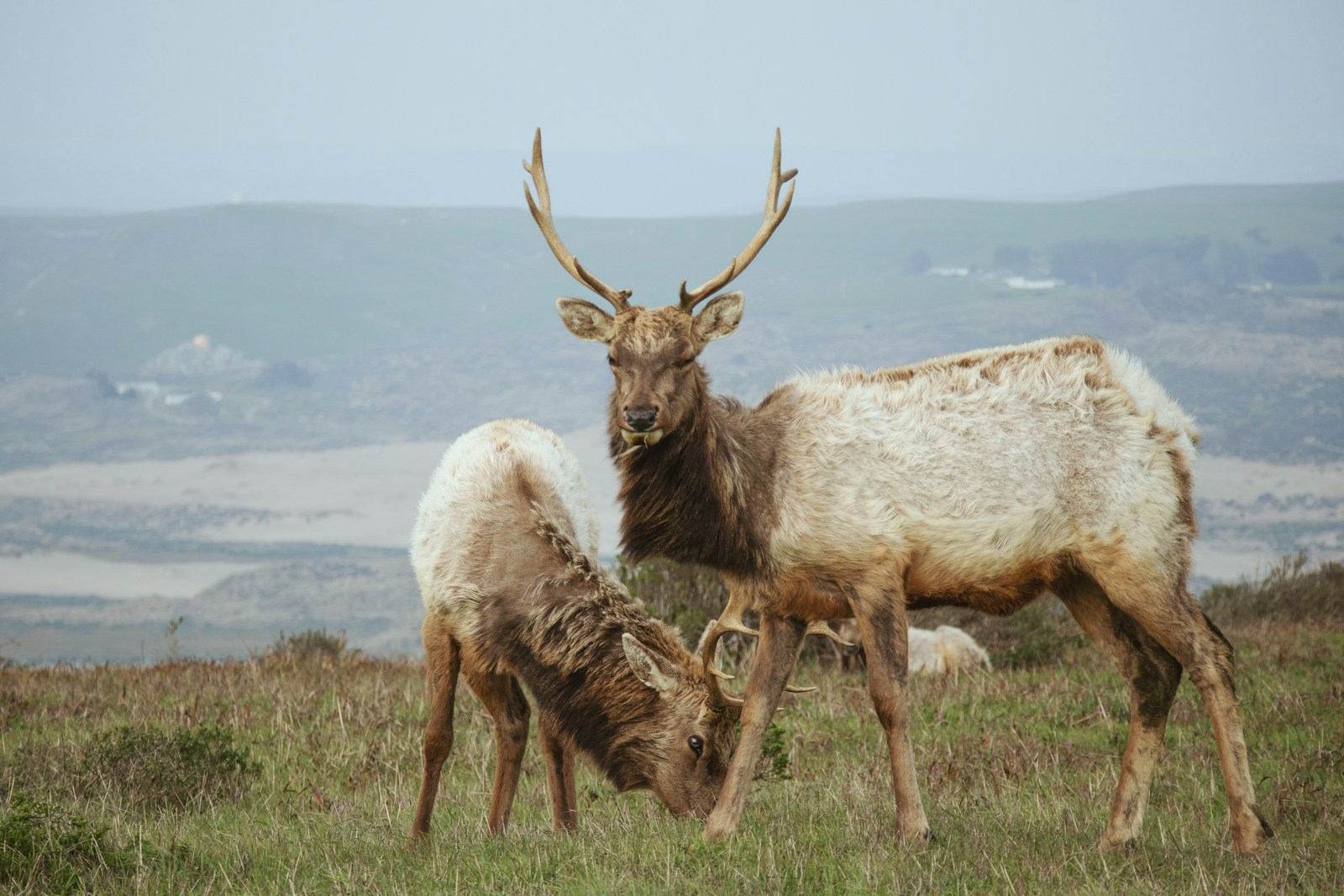Encountering an elk in the wild can be both a breathtaking and potentially dangerous experience. These majestic creatures, weighing up to 700 pounds and standing 5 feet tall at the shoulder, command respect in their natural habitat. While typically non-aggressive, elk can become territorial or defensive in certain situations, particularly during mating season or when protecting their young. Understanding how to respond appropriately during an elk encounter could mean the difference between a memorable wildlife viewing experience and a dangerous confrontation. This article provides essential guidance for hikers, campers, photographers, and outdoor enthusiasts who might find themselves face-to-face with one of North America’s most impressive ungulates.
Understanding Elk Behavior and Seasonal Patterns
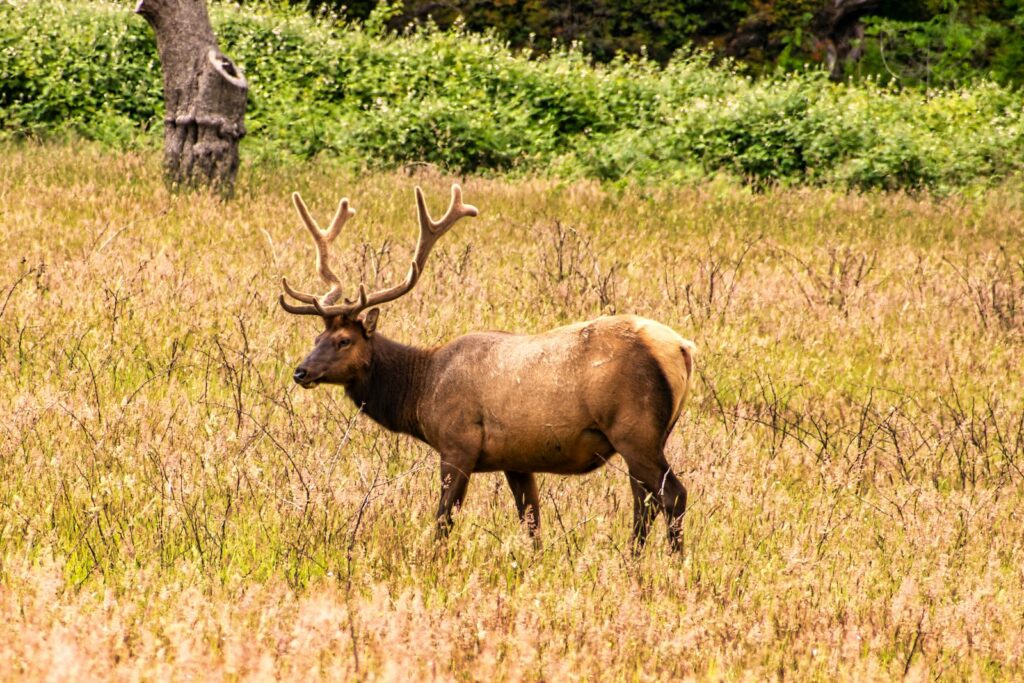
Elk exhibit distinctly different behaviors throughout the year, with the most dramatic changes occurring during the fall rutting (mating) season when bulls are extremely territorial and aggressive. During spring calving season, cow elk become fiercely protective of their vulnerable newborns and may charge perceived threats without hesitation. Summer months typically present the least aggressive behavior, though elk with calves remain vigilant and potentially dangerous. Winter conditions can make elk more desperate for food and less tolerant of disturbances as they conserve energy to survive harsh conditions. Recognizing these seasonal patterns can help you predict and avoid potentially dangerous situations when exploring elk country.
Recognizing Warning Signs of Aggression
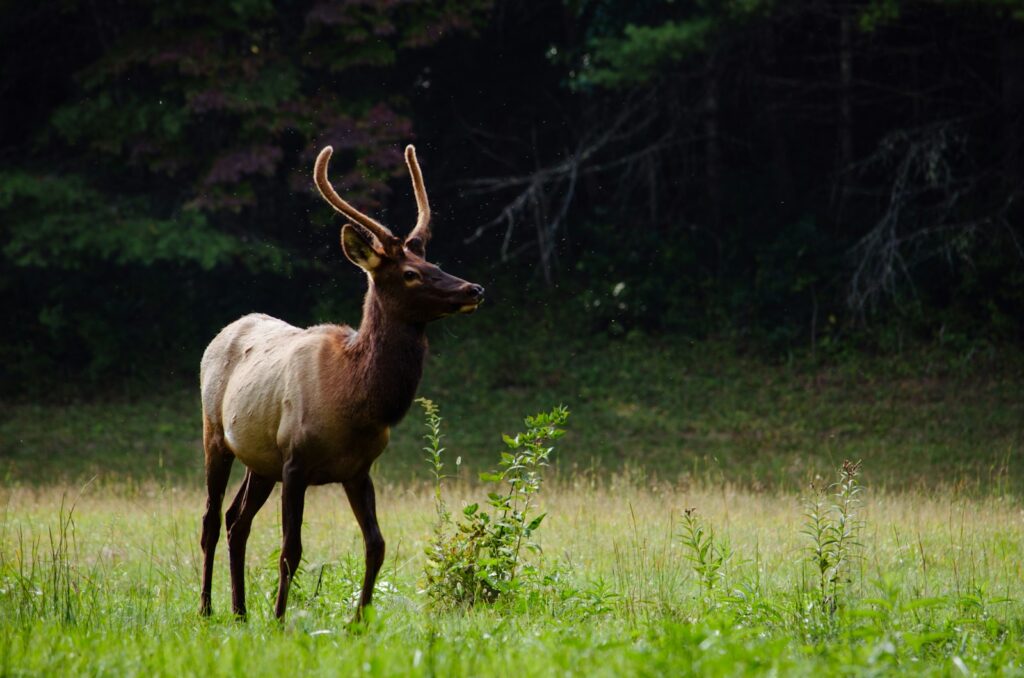
Elk communicate their discomfort or agitation through a series of escalating behaviors that serve as warning signals before they charge. Initial signs include the elk stopping its current activity, raising its head, and focusing its attention directly on you – this indicates you’ve been noticed and the animal is assessing whether you pose a threat. If the elk begins to stomp its hooves, flare its nostrils, or lay its ears back, these are clear indicators that the animal feels threatened and is preparing for possible defensive action. A particularly dangerous signal is when an elk begins to grind or “chatter” its teeth, as this often immediately precedes a charge. Should the animal begin walking directly toward you rather than away, you should immediately implement defensive measures as this represents highly aggressive behavior.
Maintaining Safe Distances During Elk Encounters

Wildlife management experts and park rangers universally recommend maintaining a minimum distance of 50 yards (150 feet) from elk at all times, regardless of how docile they may appear. This distance should be doubled or tripled during rutting season when bulls are particularly unpredictable and aggressive. Remember that elk can sprint at speeds up to 45 mph, covering the length of a football field in mere seconds, making adequate distance your primary safety measure. When photographing elk, use telephoto lenses rather than attempting to move closer for a better shot, as many wildlife injuries occur when photographers prioritize images over safety. If you find yourself inadvertently closer than the recommended distance, slowly and calmly increase the space between you and the animal without making sudden movements.
Proper Responses When an Elk Approaches
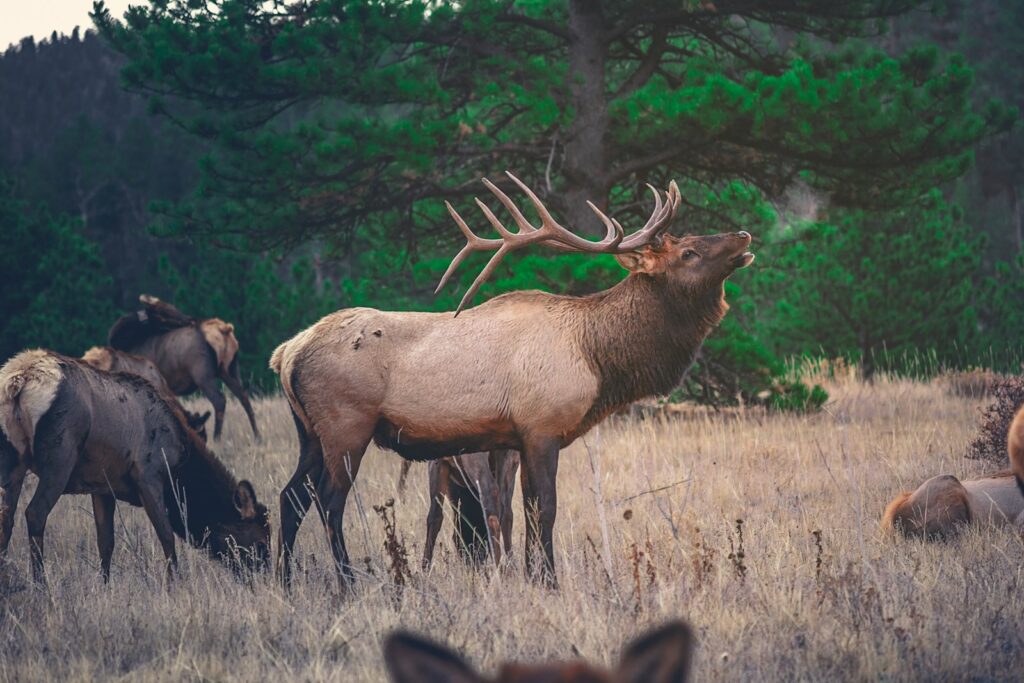
If an elk begins moving toward you despite your efforts to maintain distance, your response should be measured and strategic rather than panicked. First, identify yourself as human by speaking in a normal, calm voice – sometimes elk approach out of curiosity rather than aggression, and recognizing you’re human may cause them to lose interest. Never run, as this can trigger a chase response in many wild animals including elk. Instead, back away slowly while continuing to face the animal, making yourself appear larger by raising your arms or opening your jacket if possible. If you’re hiking with others, group together to present a more intimidating presence. Continue these tactics while gradually increasing the distance between yourself and the animal until it loses interest or you reach a safe area.
Special Precautions During Rutting Season

The rutting season, typically from September through October, transforms even normally docile bull elk into potential threats as testosterone levels surge and they compete for mating rights. During this period, bulls establish harems of female elk and will aggressively defend them against perceived competitors, including humans who venture too close. The distinctive bugling call of rutting bulls, while hauntingly beautiful, should serve as a warning to maintain extra distance. Bulls during rut may charge with little provocation and minimal warning, making unpredictable movements as they patrol their territory. If you must hike in elk country during rutting season, stick to open areas where you can spot animals from a distance and have clear escape routes available should a confrontation occur.
Protecting Yourself During a Charge

If preventative measures fail and an elk charges, your options become limited but crucial for survival. Looking for a substantial barrier such as a vehicle, large tree, or boulder should be your first priority – something that can physically block the elk from reaching you. If no such barrier exists, dropping to the ground in a fetal position while protecting your head and neck represents your best chance of minimizing injury, as elk typically attack with their antlers and hooves but may lose interest if you no longer appear to be a threat. Unlike with predators like bears, playing dead may actually be effective with elk once they’ve made contact, as they don’t view humans as prey and are usually trying to neutralize a perceived threat rather than secure food. Remember that standing your ground against a charging elk is extremely dangerous and should only be considered as an absolute last resort when no other options exist.
Hiking Safely in Elk Country
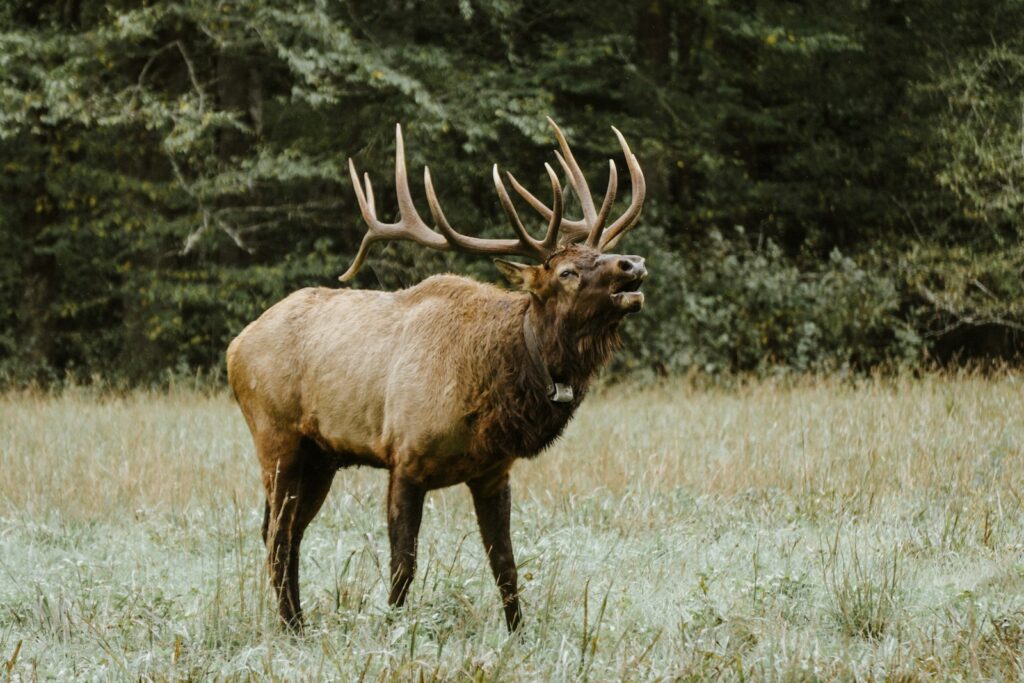
When traversing areas known for elk populations, several precautionary measures can significantly reduce your risk of dangerous encounters. Hike in groups whenever possible, as elk are less likely to approach multiple people, and conversation naturally alerts wildlife to your presence without startling them. Stay on designated trails where elk are accustomed to human traffic and visibility is generally better for spotting animals before you’re too close. Carry bear spray, which can be effective against charging elk as well as bears, keeping it accessible in a belt holster rather than buried in your backpack. Consider hiking during mid-day when elk are typically less active, avoiding dawn and dusk when feeding activity peaks and visibility is reduced, creating higher chances for surprise encounters.
Camping Considerations in Elk Habitat
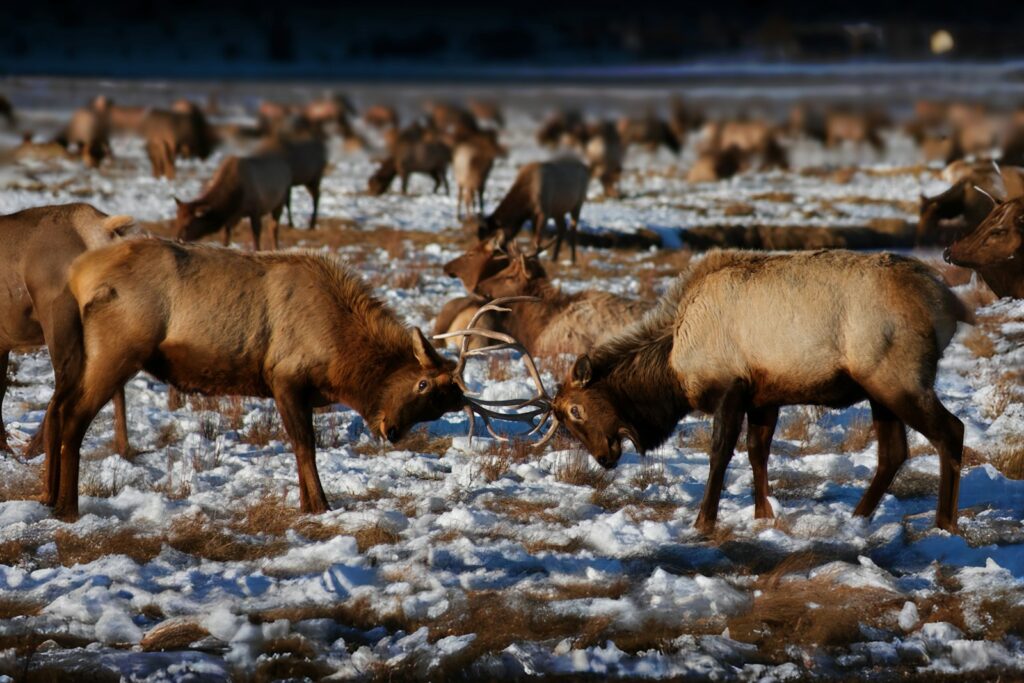
Setting up camp in elk territory requires special attention to both location and practices to ensure your safety throughout the night. Choose established campgrounds when available, as elk generally give these high-human-use areas a wider berth. If backcountry camping, avoid setting up in meadows, near water sources, or along game trails where elk frequently travel or feed. Store food using the same precautions you would for bear country, as food odors can attract curious elk to your campsite. Before settling in for the night, scan the surrounding area for signs of recent elk activity such as tracks, droppings, or browsed vegetation, and relocate if these indicators suggest you’re in a heavily used area. Keep a flashlight and bear spray accessible during the night in case an elk wanders into your campsite, allowing you to identify and deter the animal if necessary.
Vehicle Safety Around Elk
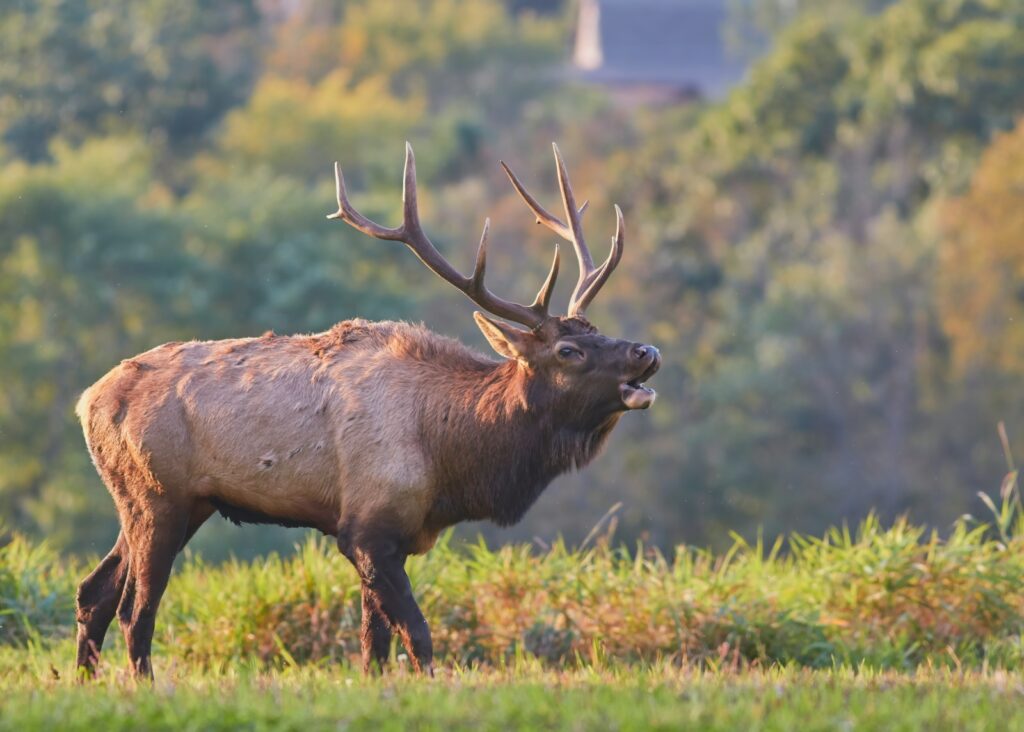
Encountering elk while driving presents its own set of challenges and safety considerations, particularly on rural roads through wildlife habitat. Reduce your speed in areas with elk crossing signs or when traveling during dawn and dusk when visibility is limited and elk movement peaks. If you spot an elk near the road, slow down significantly and be prepared for the animal to suddenly bolt across your path, remembering that elk rarely travel alone – where there’s one, there are likely more nearby. Never exit your vehicle to approach elk for photographs or a closer look, as this puts you at risk and habituates the animals to human presence, making them less fearful and potentially more dangerous in future encounters. If an elk blocks the road, remain in your vehicle and wait patiently for it to move on rather than honking or attempting to drive around it, which could provoke an aggressive response.
Special Considerations for Dogs and Elk Encounters
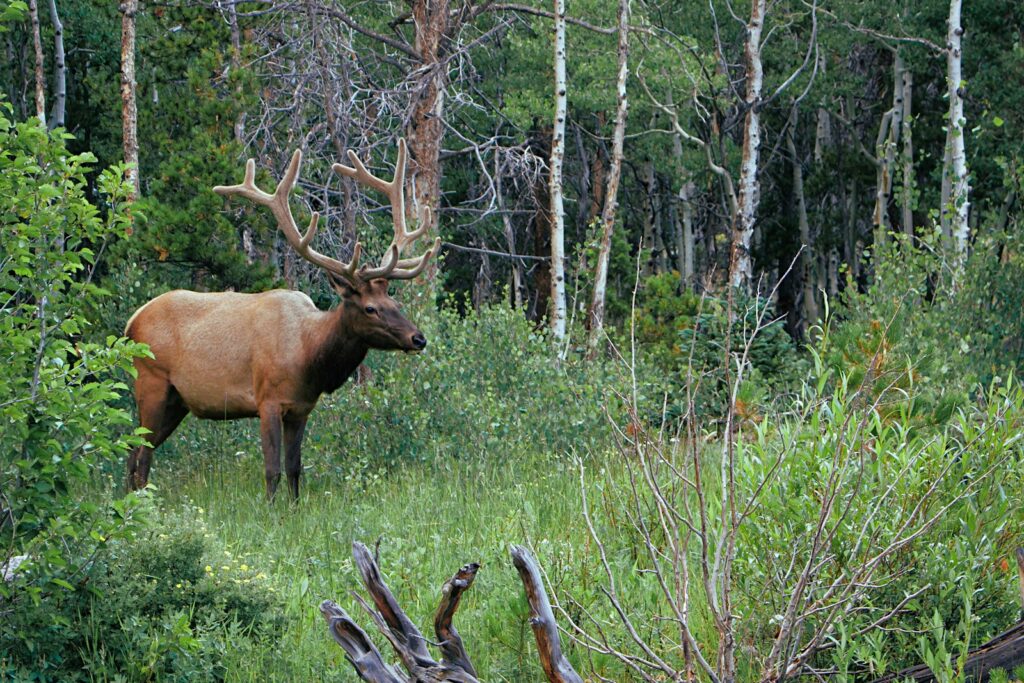
Dogs introduce a significant complication to elk encounters, as elk perceive canines as predators similar to wolves and may respond with immediate aggression rather than warning behaviors. When hiking with dogs in elk country, keep them leashed at all times, preferably with a short, sturdy leash that allows for maximum control. If you encounter an elk while with your dog, create as much distance as possible between your pet and the wild animal, keeping yourself between them if necessary. Never allow your dog to bark at, chase, or otherwise engage with elk, as this dramatically increases the risk of the elk charging either the dog or you. In the event of an elk charge toward your dog, be prepared to release the leash if absolutely necessary to avoid being pulled into the confrontation yourself, though this represents a last resort as it puts your pet at severe risk.
Photographing Elk Responsibly and Safely
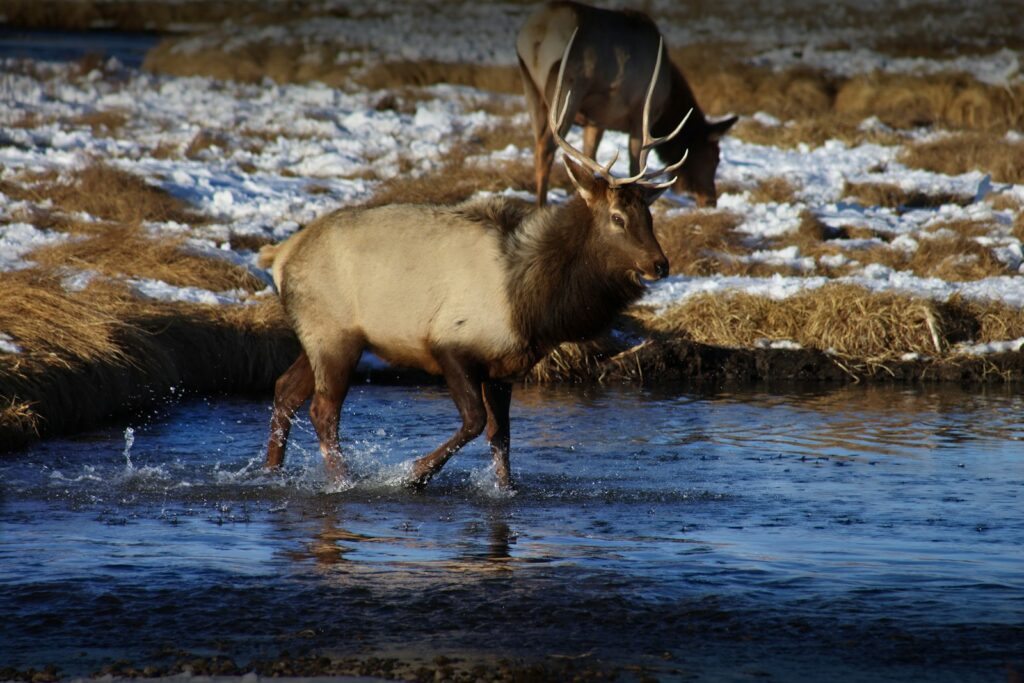
Wildlife photography enthusiasts often place themselves at risk by prioritizing the perfect shot over personal safety when encountering elk. Professional wildlife photographers universally recommend using telephoto lenses (300mm or longer) to maintain safe distances while still capturing detailed images. Setting up a tripod can help stabilize longer lenses but should be done at established observation areas rather than by approaching the animals directly. Never use flash photography around elk, as the sudden burst of light can startle and agitate them, potentially triggering a defensive response. If an elk begins showing signs of awareness or discomfort with your presence – such as stopping feeding, staring, or orienting its body toward you – it’s time to back away slowly and abandon the photo opportunity rather than risk escalation.
What to Do If You’re Injured by an Elk

Despite taking precautions, elk encounters can sometimes result in injuries that require immediate attention. If injured, your first priority should be creating distance between yourself and the animal, crawling away if necessary until you’re certain the elk has lost interest or left the area. Once safe, assess your injuries – elk attacks typically cause blunt force trauma from hooves or antlers that may result in broken bones, lacerations, or internal injuries requiring prompt medical attention. Apply direct pressure to any bleeding wounds using clean clothing or first aid supplies if available. If alone, use a cell phone or emergency beacon to call for help, providing your exact location and the nature of your injuries. When reporting the incident to park rangers or wildlife officials, be honest about the circumstances that led to the encounter, as this information helps authorities manage wildlife conflicts and educate other visitors.
Teaching Children About Elk Safety
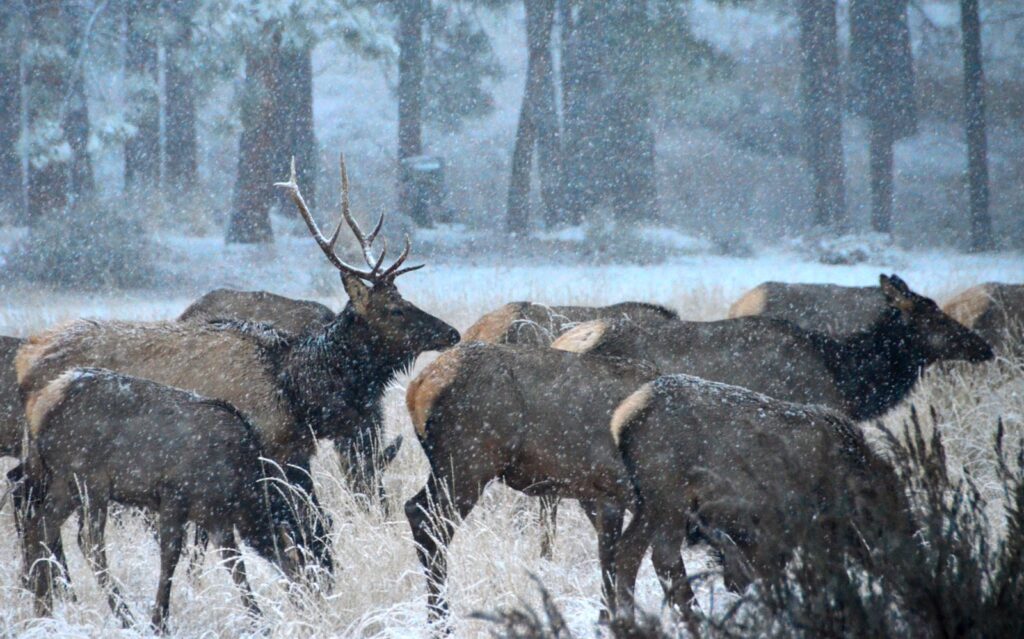
Children require special preparation and supervision in elk country due to their smaller size, unpredictable movements, and natural curiosity about wildlife. Before visiting elk habitat, teach children to recognize elk and understand that despite their resemblance to familiar cartoon characters, these are powerful wild animals that must be respected from a distance. Establish a “wildlife watching voice” – a quiet, controlled tone that won’t startle animals or draw unwanted attention. Create a simple response plan that children can remember and implement if they spot an elk: “Stop, stay quiet, back away slowly, and tell an adult immediately.” Keep children within arm’s reach when in areas with potential elk activity, and consider having smaller children wear bright colors that make them easily visible to both the wildlife and supervising adults.
Conclusion
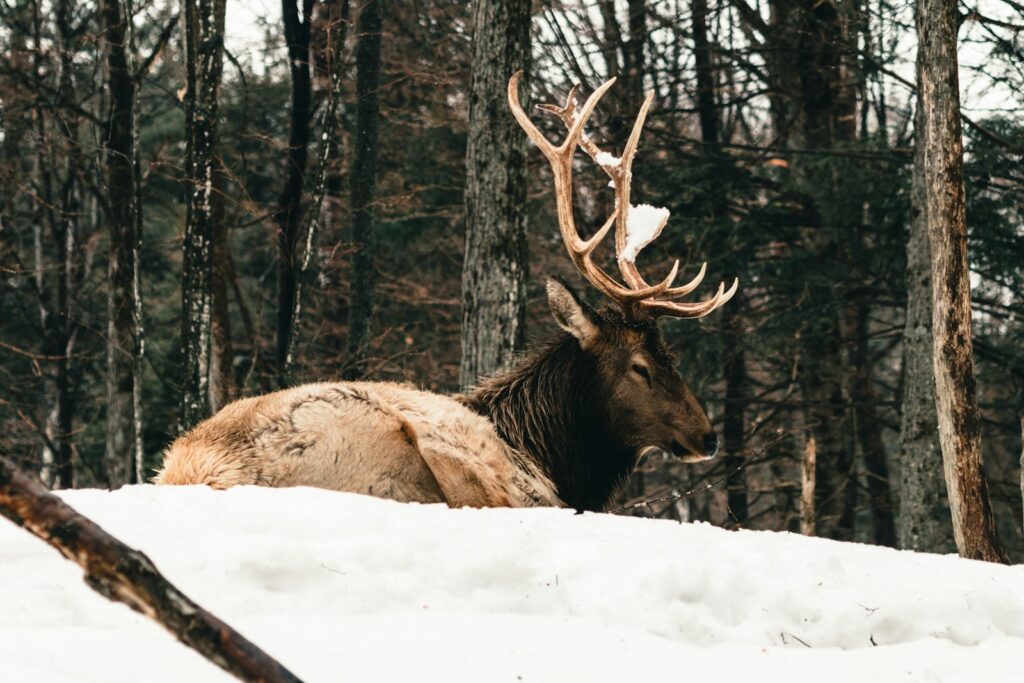
Encounters with wild elk can provide some of the most memorable experiences in nature when handled with proper knowledge and respect. By understanding elk behavior, recognizing warning signs, maintaining appropriate distances, and knowing how to respond if an elk approaches, outdoor enthusiasts can significantly reduce the risk of dangerous confrontations. Remember that we are visitors in their habitat, and our responsibility is to observe these magnificent creatures without disrupting their natural behaviors or putting ourselves at risk. With the right preparation and attitude, sharing the landscape with elk can be both safe and profoundly rewarding, offering glimpses into the wild heart of North America that few other wildlife encounters can match.

